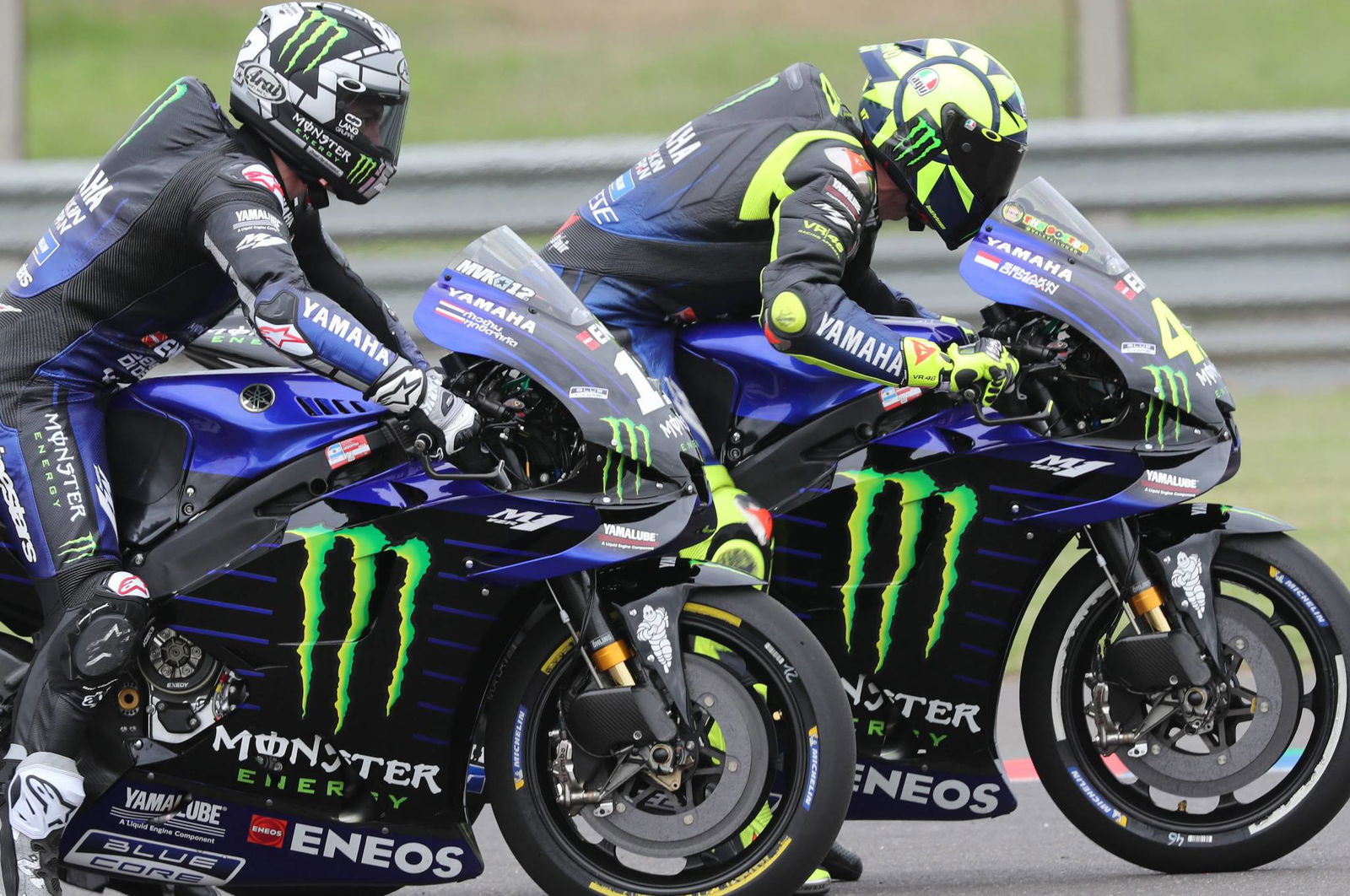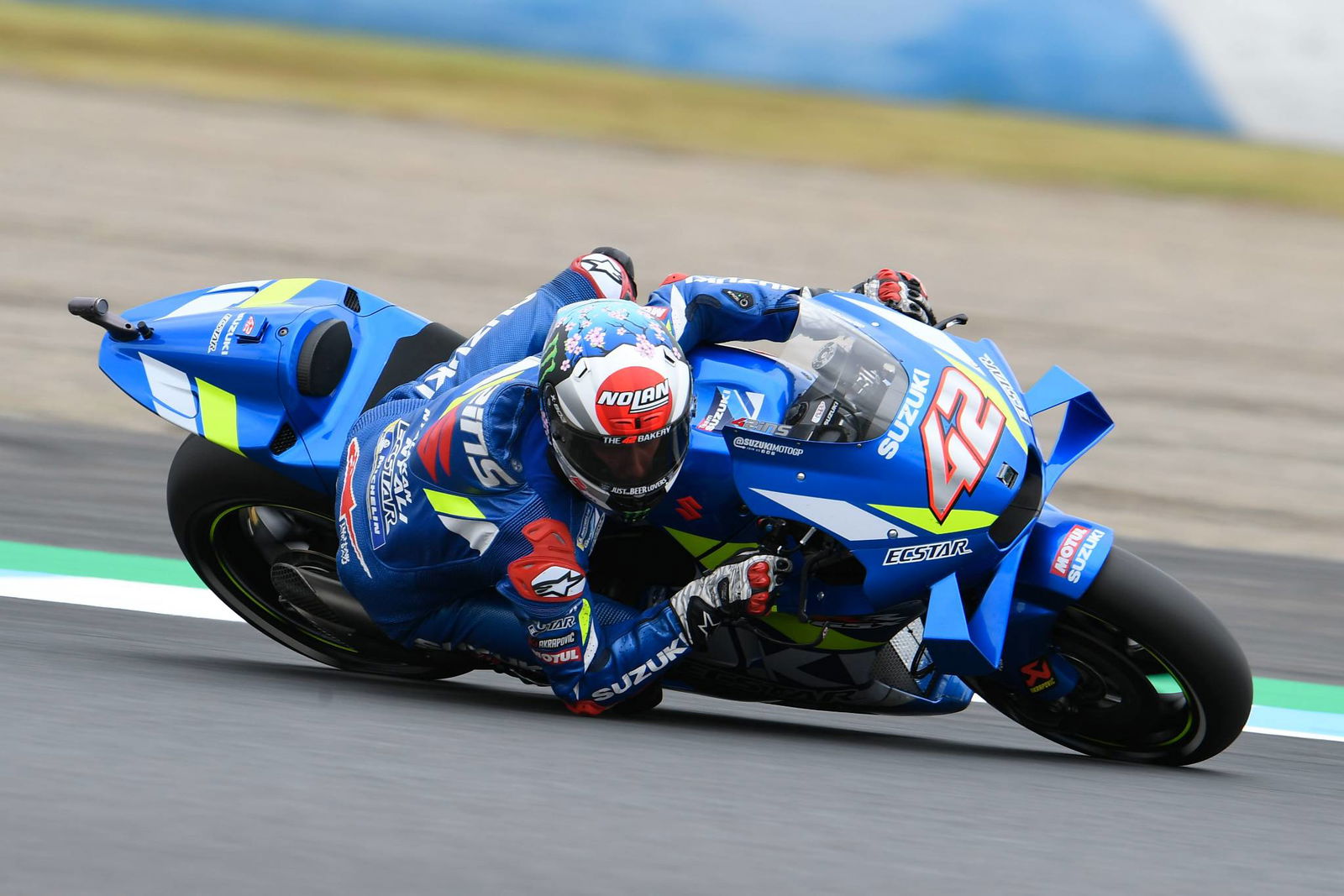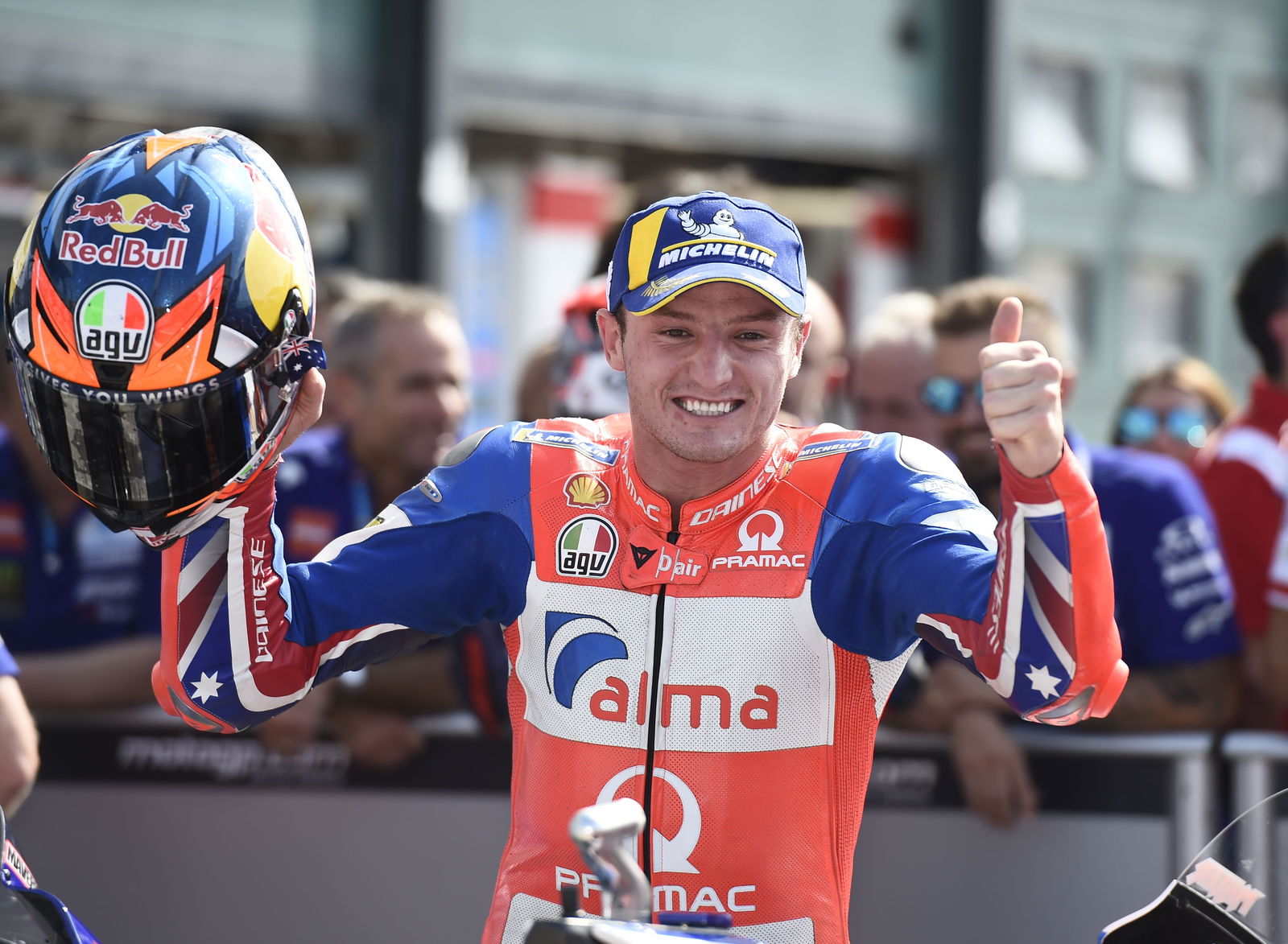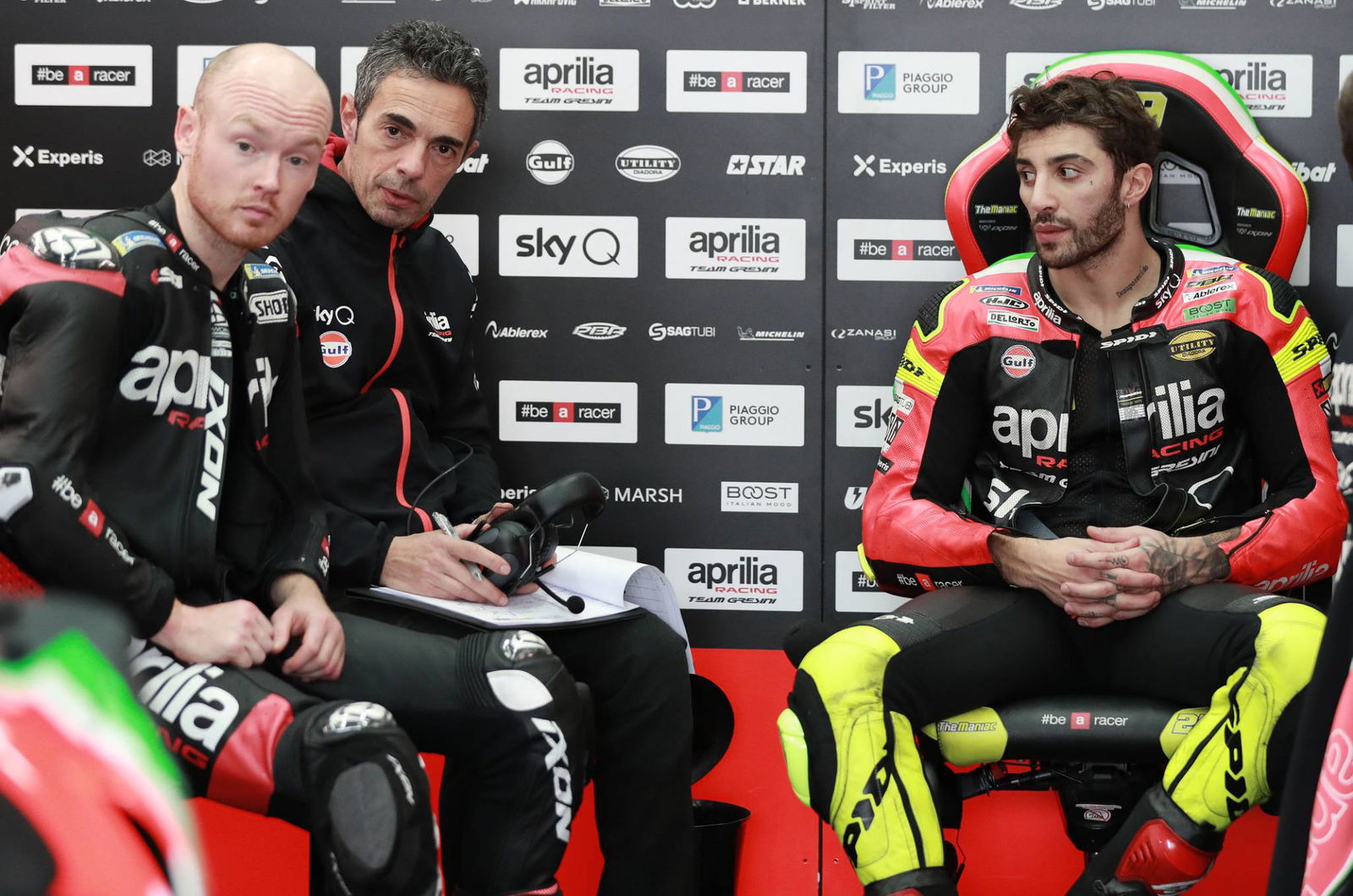What each MotoGP manufacturer needs in 2020
With testing programmes being finalised as the MotoGP paddock prepares to head to Sepang for the opening pre-season tests, Crash.net looks at what will be the biggest targets for each manufacturer.
Honda: Producing a bike that suits more than just Marquez
While Honda has justifiably been keen to defend its work with the 2019 title-winning RC213V, a quick look at the final MotoGP riders’ world championship standings reveals only Marc Marquez enjoyed a strong season.

With testing programmes being finalised as the MotoGP paddock prepares to head to Sepang for the opening pre-season tests, Crash.net looks at what will be the biggest targets for each manufacturer.
Honda: Producing a bike that suits more than just Marquez
While Honda has justifiably been keen to defend its work with the 2019 title-winning RC213V, a quick look at the final MotoGP riders’ world championship standings reveals only Marc Marquez enjoyed a strong season.
With Marquez dominating to the 2019 world title, the next-best Honda rider was Cal Crutchlow who achieved three podiums and finished down in ninth place with the British rider scoring less than a third of Marquez’s total points tally.
The aggressive engine upgrades from last winter sufficiently solved its top speed deficit to Ducati but came at a cost. Crutchlow felt the RC213V’s front-end feeling turned from a key strength to an inherited weakness which remained a major problem for all Honda riders – with Marquez using his style and skill to ride around the issue.
Reuniting a comfortable front feeling to the Honda will be high on the list of priorities for the likes of Crutchlow and Takaaki Nakagami at the satellite LCR Honda squad, and no doubt something Marquez would also desire, but not at the expense of the engine gains from last year.
Honda also has the added complication of both Marquez and Nakagami recovering from their respective shoulder surgeries which they underwent over the winter. While Marquez has been there and done that last year on his other shoulder, Honda will be wary of demanding too much too soon from its prize asset at the Sepang test.
On the other side of the Repsol Honda garage, Alex Marquez will also continue his adaptation to the RC213V having been selected as the 11th-hour replacement for the retired Jorge Lorenzo. Leaning on his brother’s guidance and experience, the younger Marquez has one of the best allies he could ask for, but Honda will be wary of him distracting Marc from his MotoGP world title target.

Can Ducati turn a corner?
Midway through last season Andrea Dovizioso’s frustrations at Ducati’s ongoing turning problems came to a head as he felt the issue was in the “DNA of the bike”.
While Ducati’s MotoGP machine has been the most exciting bike to spot in the pitlane, with technical chief Gigi Dall’Igna bringing a constant flow of new and innovative parts from the holeshot switch to the spoon, the Bologna factory’s Achilles heel has been its turning and corner speed.
“We have to be focussed on the turning because we are quite good in some other areas. But that area is really, really bad,” Dovizioso said last July. “We finished the tyres, but we finished the tyres because we had to use it to be fast. We are too slow in the middle of the corners and the only way to go faster is to accelerate.
“I think we need a strategy for the future, not for the moment. When we speak about turning it’s very difficult, and it’s the reason why we couldn’t find anything at the moment. I think it’s six years I’ve been speaking about that.”
Dovizioso’s results in 2019 reflected his concerns. Wins in Qatar and Austria were Ducati strongholds with long straights to utilise its engine power, but Dovizioso’s worst results came at Phillip Island and Misano where circuits are dominated by long and sweeping corners.
The Italian rider’s complaints are well-known to Ducati and shared by its fellow factory riders but finding the right balance between retaining the strengths of its 90-degree V4 engine and not destroying its tyres over a race distance in the process.

Yamaha’s power-hungry push
At the other end of the scale, Yamaha’s biggest weakness remains its lack of top speed compared to its V4 rivals as its inline four engine remains down on power.
12 months ago Yamaha faced an increasingly uphill task of reeling in Honda and Ducati with its underpowered bike which wasn’t gelling with the electronics package and Michelin tyres.
Yamaha has taken significant steps in that department following a technical department overhaul which has resulted in helping to preserve tyre life by creating a smoother and stable power delivery on corner exit.
Coupled with the added boost from Fabio Quartararo’s breakthrough season and Maverick Vinales’s two wins – just one fewer than Ducati in 2019 – the Iwata factory beat its Italian rivals to runner-up spot in the MotoGP manufacturers’ world championship.
But its other key weakness remains top speed which continually makes for painful reading from the speed traps statistics. On average Yamaha riders have been 6km/h down on the leaders while Suzuki has even closed the gap to Yamaha over the last year.
The weakness gave Quartararo a near-impossible task battling Marc Marquez for victory in final-lap fights at Misano and Buriram, while the same situation was ultimately the undoing of Vinales against the Repsol Honda rider at Phillip Island.
Early signs aren’t overly positive after both Vinales and team-mate Valentino Rossi gave muted feedback on its prototype 2020 engine.
“Yamaha is working really hard, but today we see again we are 10ks [down] on top speed compared to Ducati. So we have to work harder,” Vinales said after the Jerez test last November.
“For sure in many other areas we are quite strong, but still in the weak point, we are at the same level right now.”
“For me the new engine is on the good way, but still the gap is very big because if you lose 9-10km/h at Jerez, when you have a track with a really long straight it's difficult,” Rossi added.
“We feel something [from the new engine] but we need more. I hope that Yamaha are able to improve a little bit for next year.”
Extracting horsepower without denting the YZR-M1’s handling and impressive corner speed will allow its riders to attack at circuits which don’t completely play to the strengths of its package.

Suzuki’s own search for speed and consistency
Much like Yamaha, Suzuki is looking to climb up the rankings in the top speed charts without diminishing its strong points in the corners. On its day the GSX-RR package has proven to be able to lead the MotoGP field but currently those days remain too few and far between to give the team a chance to fight for world titles.
As a result, Suzuki’s technical chiefs are targeting a more well-rounded package for 2020 from both its bike and its riders.
While the factory Yamaha riders remained unconvinced by the prototype engines trialled at Jerez, Suzuki felt clear gains have been found from its own 2020 versions leaving team manager Davide Brivio confident that “we can decide on the spec for next year” after the Jerez tests meaning more focus will be given to its chassis development at the Sepang tests.
Wins for Alex Rins at Circuit of the Americas and Silverstone showed signs of clear developments from the Hamamatsu team but a total of three rostrum appearances all year – the other being Rins in second place at Jerez – meaning it underdelivered on the overall target.
Rins has made progress across his three seasons in MotoGP and will need to continue that trend going into 2020, while team-mate Joan Mir will also be required to follow in his footsteps in his second year in the premier class.
But with limitations to the factory team and no satellite squad to share development work, Suzuki’s progress could become stunted compared to its bigger rivals with more resources.

KTM’s arms race translating into pace
KTM not only has the biggest scope of development but also has the largest opportunity to find gains given the current deficit to its MotoGP rivals.
Three years into its all-new MotoGP project hitting the track and the upward curve continues to head in the desired direction, albeit probably behind where it initially aimed to be going into 2020, but with numerous rider injuries and splits the reasons behind its slow progress aren’t necessarily down to its bike development.
Dani Pedrosa’s arrival, after returning to full fitness midway through 2019, has been credited with key development gains while at the Jerez test KTM revealed an armoury of parts as it looked to complete its MotoGP puzzle with the RC16.
KTM’s standout component form Jerez was the tubular steel beam chassis, tested and tweaked by Pedrosa over the summer, with Pol Espargaro giving an impressed review of the frame as it focuses on finding improvements in turning, traction and stability.
“I have also done quite good lap times with the old bike, but this is just the beginning of this [beam] chassis. For sure it’s not going to be the last one,” Espargaro said at Jerez.
“We need to study what we are doing better and worse and then just make it better and better.
“In that way, we have an advantage over the others because with our metal tube chassis we are much faster [manufacturing] than the others. This is going to be so helpful for us.”
KTM, like Aprilia, will be under less pressure to produce a new engine in time for the start of the 2020 MotoGP campaign as it is currently exempt from the engine-freeze regulations under the concession rules.

Aprilia’s promise of an all-new bike
With Aprilia stating it would deliver a new RS-GP bike for the Sepang tests, meaning it had a limited programme to run with its 2019 model in Valencia and Jerez, there is an eager interest on what the Noale factory and technical chief Romano Albesiano will reveal at the Malaysian circuit.
Development is reportedly centred around a new engine which follows the design used by Ducati and Honda to deliver greater top speed and engine braking along with better integrations of the MotoGP electronics package.
As the team with the most to do for 2020 in term of closing the performance deficit to its MotoGP rivals, Aprilia CEO Massimo Rivola remains optimistic but anticipates the new bike will need time to dial in.
“We will see the new bike in Malaysia in February and we are preparing for that as it is quite an ambitious programme. With this bike there is a lot of electronics to set up and that can be transferred to the new bike,” Rivola said in Valencia.
“I think we have a lot to learn. I’ve heard many competitors are looking to improve in specific areas but we have the engine, the electronics and many other areas to improve so we need a bit of time to do that.”

